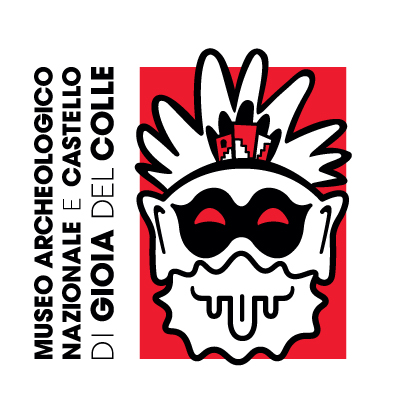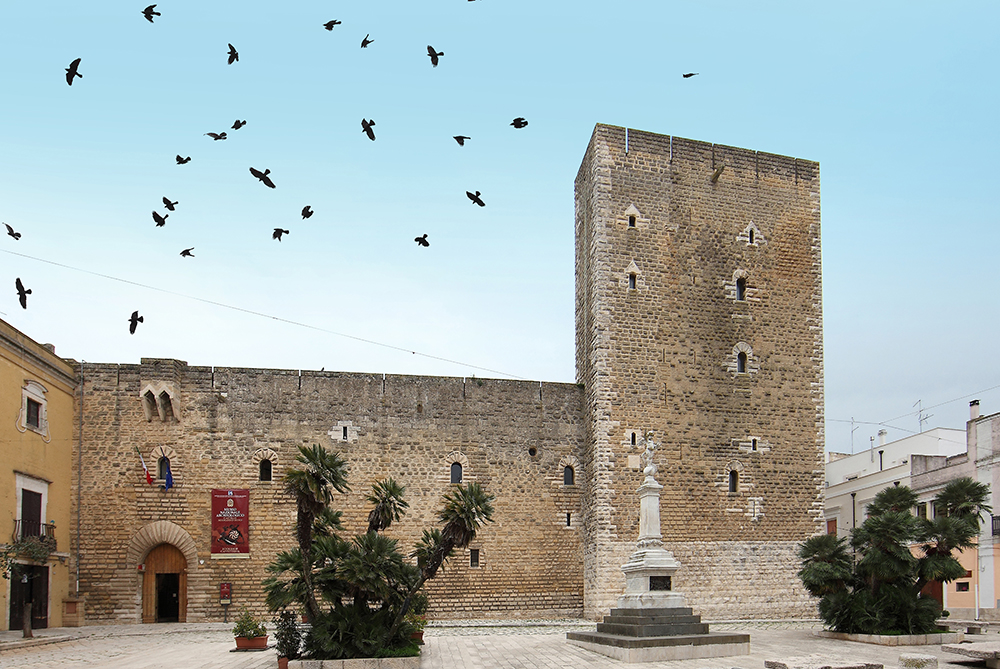National Archaeological Museum and Gioia del Colle Castle
 Since 1977 the National Archaeological Museum of Gioia del Colle, based in the Norman-Swabian Castle, hosts the finds from the excavations of the ancient town of Monte Sannace. Today it presents itself with a completely renewed look, both as regards the exhibited pieces, both for the didactic and illustrative apparatus.
Since 1977 the National Archaeological Museum of Gioia del Colle, based in the Norman-Swabian Castle, hosts the finds from the excavations of the ancient town of Monte Sannace. Today it presents itself with a completely renewed look, both as regards the exhibited pieces, both for the didactic and illustrative apparatus.

History
The important archaeological finds during the excavations of 1929 in Monte Sannace and above all the huge number of finds recovered in the excavation campaigns conducted between 1957 and 1961 signaled the birth of the museum. Later, the museum collection was further enriched with the findings resulting from the research in the archaeological area over the recent by the Superintendency and the University of Bari. The excavations continue to this day, extending to wider sectors of the territory.
Trivia
The Castle of Gioia del Colle is a part of the fortified works of the Frederician era that preserve the architectural layout, defined by the large quadrangular courtyard, and by the imposing towers and mighty curtains with ashlar facing. Located in a dominant position, 360 meters above sea level, it was mainly a structure of war plant, set up for the defense of the territory and a nodal point for communication among important roads that connected Bari and Taranto, and the Ionian-Taranto area to the Adriatic. The building is the result of an architectural and artistic syncretism that took place over three periods (pre-Norman, Norman and Swabian) but also of more recent contributions, characterized by the interventions of restoration during the twentieth century. However, the Frederician phase represents its principal component. The archaeological exhibition is dedicated to artifacts belonging to the ancient Peucezi (7th – 2nd century B.C.). The collection consists of vases belonging to grave goods and ordinary domestic vases discovered in the ancient town of Monte Sannace 5 km from Gioia del Colle, currently a State-owned Archaeological Park open to the public. These are large geometric decorated jugs, kantharoi decorated with swastika motifs and pendulous semicircles, but also of Attic, Ionic and Corinthian vases, which attest to the presence of exchanges and trade between the indigenous Peucetian population and the Greek peoples. During the summer, the Castle is also home to shows and artistic events, which help introducing the museum into the social and cultural fabric of the city.
Info and Contacts
Piazza dei Martiri del 1799, 1
Telephone: 0803481305
Director: Fabio Galeandro
Email: drm-pug.museogioiadelcolle@cultura.gov.it
Contact us for more information
The fields marked with (*) in addition to the acceptance of our Privacy and Cookie Policy, are required to send the message.





